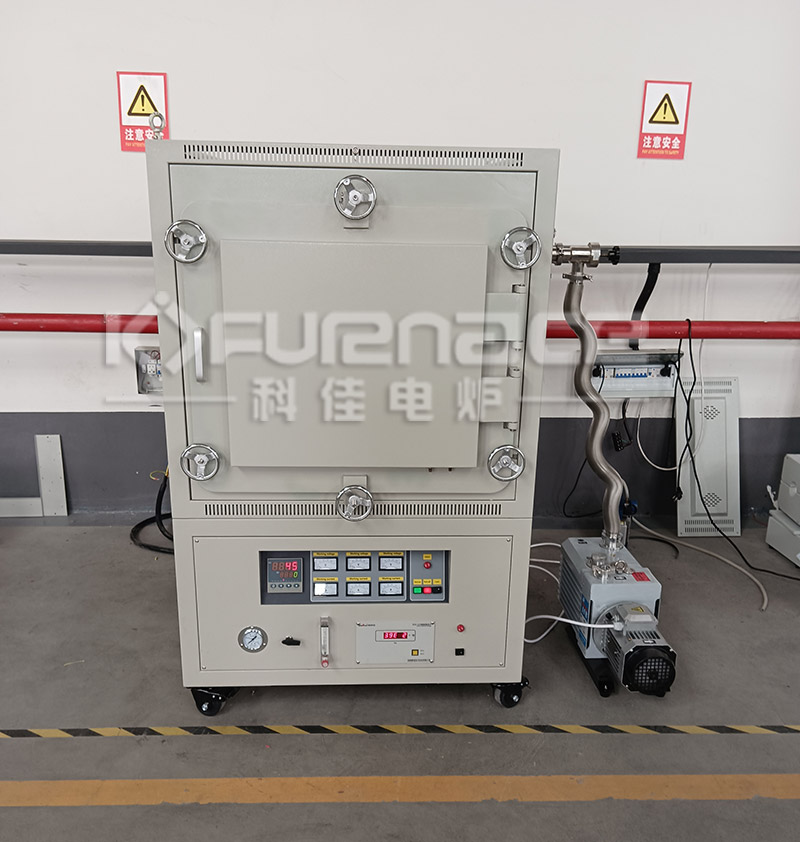When selecting the furnace size for an industrial atmosphere furnace, multiple factors need to be considered comprehensively to ensure that the furnace can meet production needs and achieve better performance. Let’s take a detailed look at what to pay attention to when choosing!

Commonly used high-temperature vacuum atmosphere muffle furnace (click on the picture to view product details)
Sample size and quantity:
Shape and size: Firstly, it is necessary to clarify whether the shape of the experimental or production sample is regular (such as cube, cylinder) or irregular. For samples with regular shapes, measure their length, width, height, or diameter, height, and other dimensions. If it is an irregular shape, its maximum length, width, and height can be estimated.
Quantity: If multiple samples need to be processed simultaneously, the arrangement of the samples should be considered. For samples of the same size, a neat arrangement (such as matrix arrangement) can be used to calculate the space occupied by all samples.
Gap: When selecting the size of the furnace, it is necessary to ensure that the sample can be completely placed in the furnace and leave at least a certain gap in all directions (generally recommended to have a single-sided gap of about 10-20 millimeters) to ensure uniform heat distribution and safe placement of the sample.
Material characteristics:
Volume expansion: Some materials undergo volume expansion during heating. For example, metals may expand at high temperatures, and ceramic materials may also experience some degree of volume change during sintering. It is necessary to understand the expansion rate of the sample at high heating temperatures and select the furnace size based on the expanded size.
Generating gas or substance volatilization: If the sample produces gas (such as thermal decomposition of organic matter, chemical reaction producing gas, etc.) or substance volatilization during the heating process, sufficient space should be reserved to accommodate these gases, to avoid damaging the furnace chamber or affecting the experiment due to excessive pressure caused by gas accumulation.
Process requirements:
Temperature uniformity: Generally speaking, the smaller the furnace size, the better the temperature uniformity under the same conditions. But if the process does not have particularly high requirements for temperature uniformity and requires the processing of larger samples or a large number of samples, a larger furnace can be selected, and the degree of temperature non-uniformity can be minimized as much as possible through a reasonable layout of heating elements and temperature control strategies.
Heating method: Different heating methods (such as electric heating, etc.) may also have different requirements for furnace size. The appropriate furnace size needs to be selected based on the specific heating method.
Convenience of operation:
Sample placement and retrieval: The size and depth of the furnace opening should facilitate the placement and retrieval of samples. If the furnace is too deep and the opening is small, it may cause difficulties in placing and removing larger or heavier samples, and may even damage the samples or heating elements.
Auxiliary equipment: If temperature sensors, atmosphere control devices, or sample observation devices need to be placed in the furnace during experiments or production processes, the space occupied by these devices should also be considered, and appropriate furnace sizes should be selected to ensure that these devices can be installed and used normally.

1600 ℃ Box type Atmosphere Furnace (Click on the picture to view product details)
Other factors:
Furnace material: The furnace material needs to be able to withstand high temperatures and atmospheric corrosion, usually choosing materials that are resistant to high temperatures and corrosion, such as alumina fiber, graphite, etc.
Insulation effect: Good insulation effect can reduce energy consumption and improve heating efficiency. When choosing the size of the furnace, the thickness and material of the insulation layer should also be considered.
Click to learn more Atmosphere Furnaces! Or click on online customer service to learn more about product information!